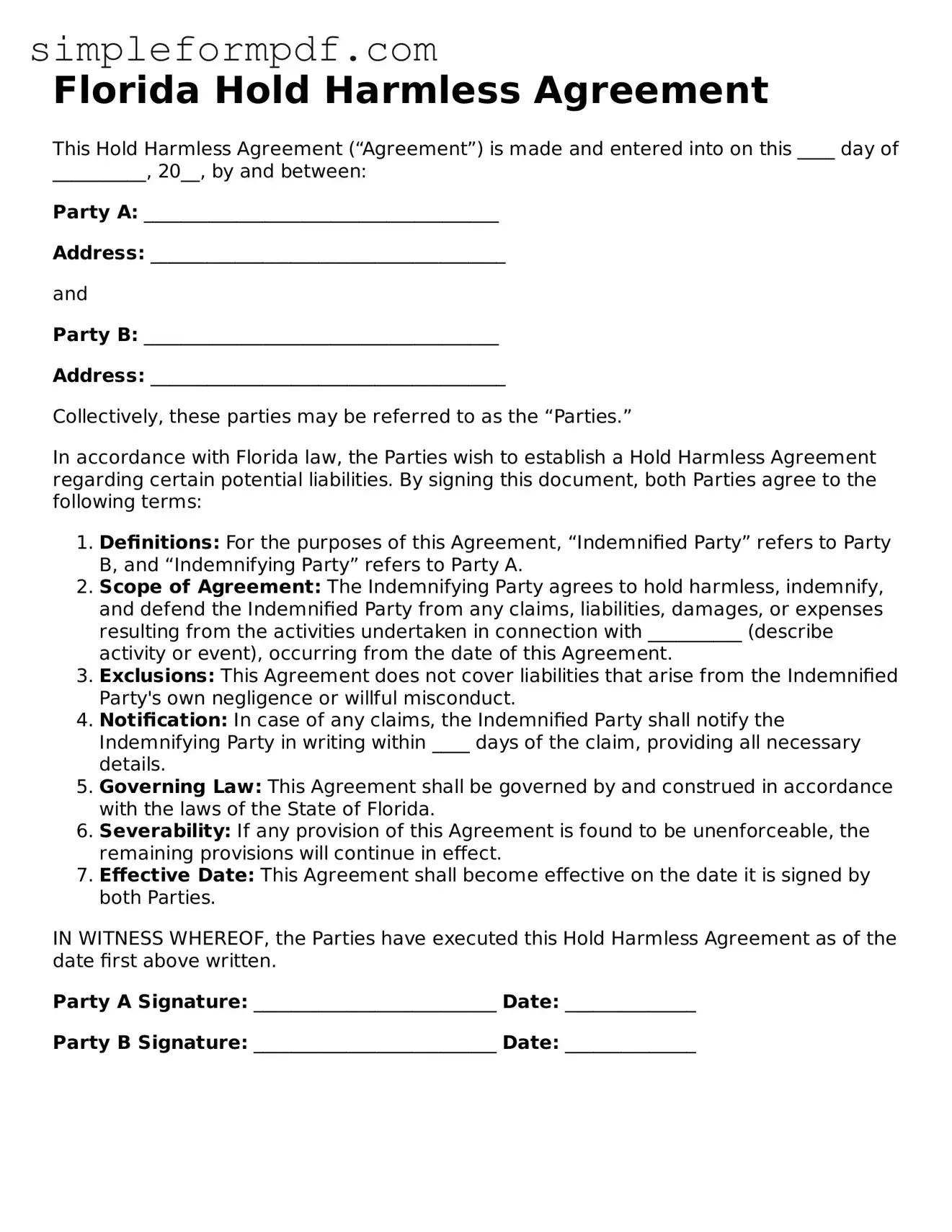Florida Hold Harmless Agreement
This Hold Harmless Agreement (“Agreement”) is made and entered into on this ____ day of __________, 20__, by and between:
Party A: ______________________________________
Address: ______________________________________
and
Party B: ______________________________________
Address: ______________________________________
Collectively, these parties may be referred to as the “Parties.”
In accordance with Florida law, the Parties wish to establish a Hold Harmless Agreement regarding certain potential liabilities. By signing this document, both Parties agree to the following terms:
- Definitions: For the purposes of this Agreement, “Indemnified Party” refers to Party B, and “Indemnifying Party” refers to Party A.
- Scope of Agreement: The Indemnifying Party agrees to hold harmless, indemnify, and defend the Indemnified Party from any claims, liabilities, damages, or expenses resulting from the activities undertaken in connection with __________ (describe activity or event), occurring from the date of this Agreement.
- Exclusions: This Agreement does not cover liabilities that arise from the Indemnified Party's own negligence or willful misconduct.
- Notification: In case of any claims, the Indemnified Party shall notify the Indemnifying Party in writing within ____ days of the claim, providing all necessary details.
- Governing Law: This Agreement shall be governed by and construed in accordance with the laws of the State of Florida.
- Severability: If any provision of this Agreement is found to be unenforceable, the remaining provisions will continue in effect.
- Effective Date: This Agreement shall become effective on the date it is signed by both Parties.
IN WITNESS WHEREOF, the Parties have executed this Hold Harmless Agreement as of the date first above written.
Party A Signature: __________________________ Date: ______________
Party B Signature: __________________________ Date: ______________
